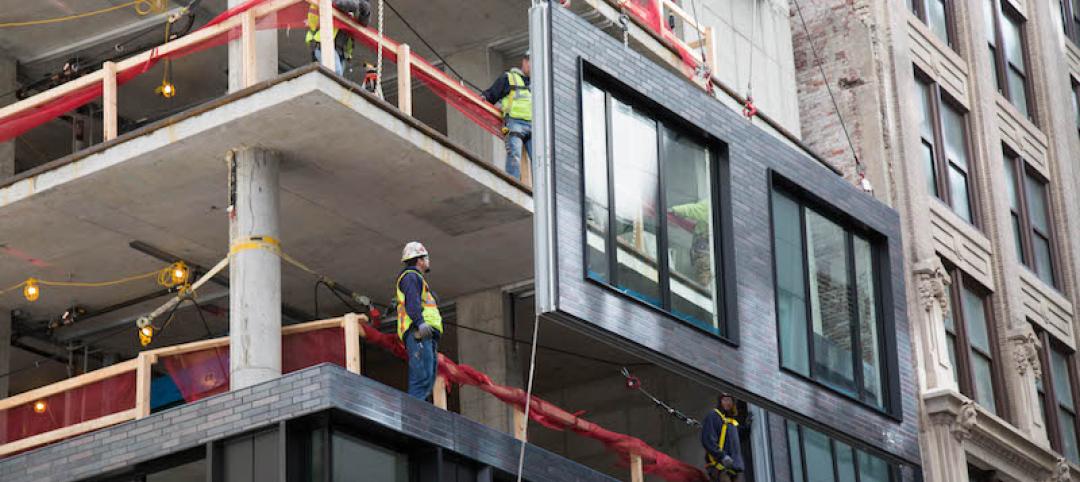“Motivation and Means: How and Why IPD and Lean Lead to Success”, co-sponsored by the Integrated Project Delivery Alliance, explodes several myths about Lean and IPD.
Myth #1: Delivery matters less than choosing the right people; behaviors can’t be dictated by a contract. You won’t get the A Team every time, but you can still foster positive behavior, says principal author Renée Cheng, PhD, AIA, Professor, School of Architecture, University of Minnesota. Think through which players you want on your team, how to create the right culture, and how to get rid of nonperformers.
Myth #2: IPD contracts are too complicated, Lean tools are too rigid. IPD and Lean are “a lot more flexible than people think,” says Cheng. Investing the time up front for designing your IPD and Lean procedures can pay off in huge ROI. Teams also vary in how they use IPD and Lean. It’s not as rigid as commonly believed, she says.
Myth #3: IPD only works on large complex healthcare projects. Teams new to IPD and Lean are at a disadvantage. Cheng says there’s no evidence that small projects cannot benefit from using an IPD and Lean. Moreover, you can have a team that’s new to IPD, or one that has half its team members experienced in IPD and Lean, and both can still work, she says.
Myth #4: Owners aren’t getting best value; or, owners are getting value but the team is not making a profit. Cheng says it’s hard to get at “pure results” for owners because “it usually depends on how well the owner sets the cost and schedule targets.” The research did show that 100% of owners in the study said their IPD/Lean projects met or exceeded expectations.
In terms of meeting schedule, some teams were just a bit over, a number were under. Similarly, with regard to budgets, one project team went over, some were at budget, a number were under.
As for profitability, Cheng says some project teams have reported making 20-30% more in an IPD than under a non-IPD. “I did see teams working collectively with the owner to determine a target cost, and this drove the original allowable cost way below market, and the profit was distributed.”
Myth #5: IPD and IPD-lite are essentially the same; financial incentives and release of liability are no big deal. Cheng says the behavior is “strikingly different” between those who have skin in the game and those who do not. “Those in the signatory pool behave much more collaboratively, there’s a lot more fluidity in how they’re willing to trade scope, and they’re much more willing to call out behavior that’s not productive.”
Finally, there’s a lot more “fun and enjoyment” in true IPD projects, says Cheng—“a lot more time being spent on positive things. It’s very positive and collaborative.”
Related Stories
Contractors | Oct 26, 2018
How three contractors expanded thin profit margins
If there’s one issue that every contractor is familiar with, it’s the challenge of finishing the job on time and on budget.
Contractors | Oct 26, 2018
Three ways construction leaders harness digital transformation
The construction industry is lagging behind others when it comes to digital transformation. Some construction firms “are still using paper-based processes that can only be described as archaic,” according to a 2016 report by PricewaterhouseCoopers LLP’s Strategy1.
Contractors | Oct 24, 2018
How seasoned construction pros handle the cost of scaling up
Here’s how seasoned operators meet the new demand for homes, offices and new locations without drowning in new expenses.
Contractors | Oct 2, 2018
Nonresidential spending reaches new high in August
Total nonresidential spending stood at $762.7 billion in August, an increase of 8.4% compared to one year ago.
Contractors | Oct 2, 2018
Katerra adds a Denver-area GC to its growing stable
Bristlecone Construction brings self-performing expertise in concrete and framing.
Architects | Sep 14, 2018
We’ve entered the golden age of brain science. What does it mean for AEC firms?
New research from the SMPS Foundation explores the known principles and most recent research surrounding the human brain and behavioral science. The goal: to discover connections between the science and the AEC business.
Contractors | Sep 5, 2018
Lean, tech, talent training highlight contractor innovations
From 5D estimating tools to interactive punch lists, the nation’s largest construction and construction management firms continue to push technology to gain an edge.
Modular Building | Aug 6, 2018
More contractors are turning to offsite production for speed and quality
Skender launches an advanced manufacturing division. Katerra ups its bet on modular. Prefabrication comes to the rescue on multiple projects.
Architects | Aug 1, 2018
Client experience as competitive advantage for AEC firms
Clients are looking for solutions to their business problems from collaborative advisors. They’ve come to expect a higher level of service and detail than what was provided in the past.
Codes and Standards | Jul 31, 2018
Workers allegedly held in captivity by construction subcontractor in San Jose pay theft case
Contractor pays $250,000 in back wages in Dept. of Labor enforcement action.

















